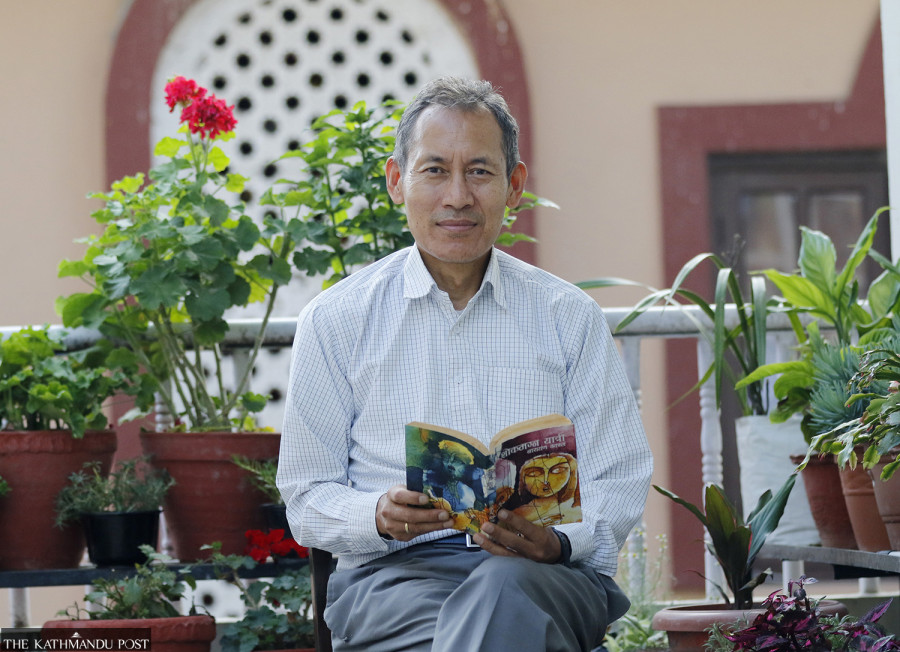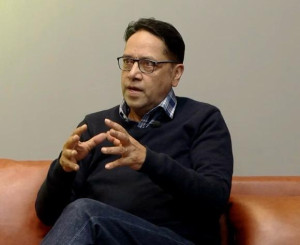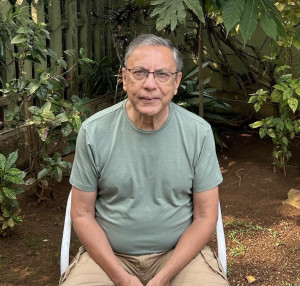Books
He writes it as he sees it
Roshan Sherchan shares why there should be more space for indigenous writers to share their views.
Rose Singh
At the heart of writer Roshan Sherchan’s works lies a deep connection to the community, inspired by his involvement in biodiversity conservation and community-based natural resource management in the Annapurna Conservation Area Project. His writing beautifully blends sociocultural realities with environmental elements.
Sherchan has published two poetry books and three essay collections, including ‘Shabdaharuko Desh’, ‘Mastikshaharuko Mrityu’, ‘Champaran Blues’, and ‘Dhobighat Express’—with another in progress.
In a conversation with Post’s Rose Singh, Sherchan shares his love for books and advocates for more opportunities for indigenous writers to express their environmental perspectives.
How did you develop your love for reading?
I began reading as a way to cope with homesickness during my school days. I lived in a hostel away from home. Fortunately, our Nepali teacher was excellent at fostering creativity and bringing literary works to life, sparking my fascination with Nepali literature. That’s how my extensive reading journey started.
Which authors have influenced your reading and writing journey?
Influence is fluid, and over time, my preferences have evolved. While some writers I once cherished no longer resonate, others have stayed with me. One of my all-time favourites is Dhanush Chandra Gautam, especially his book ‘Ghamka Pailaharu.’ Even after 30 years, it remains a significant milestone read for me. Gautam’s skill in portraying complex characters captivated me and drew me to his writings. Authors like Tirtha Gurung, Narayan Dhakal, and Bhupin have also played a crucial role in shaping my interest in Nepali literature.
How do you begin writing an essay collection?
When I first began writing, my creative expression took the form of poetry, a genre that allows for imaginative exploration and a unique perspective on the world. After publishing a poetry anthology and a long poem, I shifted to writing essay collections. Now, I aim to engage readers intellectually rather than solely evoke emotions.
Essays offer a distinct opportunity for non-fiction writing with creative freedom. With over thirteen years of experience in biodiversity conservation, I developed a fact-based writing style while working with diverse communities. My writings reflect the realities of Gurung community. I have a simple and straightforward writing style that is devoid of ambiguity. I think writers need to be conscious of writing contradictions.
To ensure resonance with my audience, I adopted a writing process from their perspective. I spontaneously created poems and stories, sharing them with the community and observing their reactions. This approach helped me refine my writing and address any possible contradictions.
Can you give an example of how your encounters shape your essays?
I draw inspiration for my essays from the places I visit, often through memoirs. Once, during my involvement with Chitwan National Park, I met a Tharu community member who shared a gripping tale of a tiger encounter while he was collecting wood. Despite losing an eye in the attack, he later joined the park’s administration. His response to working with the very species that harmed him revealed the complexities of conservation and local dependence on resources.
Just because an area comes under Conservation and Preservation territory doesn’t stop the local people’s dependency on the resources from that area.
Essays allow me to explore these intersections beyond facts, infusing them with human values. Another similar example is how the mountains hold natural significance and profound religious importance for their inhabitants.
How do you feel about the current Nepali literary scene?
In today’s Nepali literature, poetry embraces diverse topics, while narrative storytelling quality seems to have declined. The structured storytelling seen in books like ‘Pretkalpa’, ‘Ghamka Paila’, ‘Madhavi’, and ‘Pagalbasti’ has become rare. Instead, the focus has shifted towards character dialogues, with less emphasis on ideology, environmental descriptions, and subplots.
Travel memoirs and self-reflection essays are flourishing in the essay field, leading to a crisis for satirical essays. The once-popular satirical essays of the Bhairav Aryal period are no longer prevalent. Many writers seem rushed and lack sufficient practice, though there are exceptions. Furthermore, the literature scene lacks critical appreciation, often reducing writing to mere judgments of “good” or “bad” without nuanced analysis.
What do you think about the space indigenous languages hold in Nepali literature?
The importance of the Nepali language has not diminished; it has, in fact, increased. Additionally, various regional and indigenous languages are gaining prominence amidst the rise of global dominance. Studies and debates on the historical development of indigenous languages are prevalent. In literature, writers from different languages are reaffirming their experiences, roots and beliefs, and asserting control over their cultural and identity narratives. They explore their identity and culture through a contemporary lens. As political changes unfold, more writers may find increased opportunities to express and delve into their language, culture, and traditions.
Roshan Sherchan’s book recommendations:




 6.94°C Kathmandu
6.94°C Kathmandu












